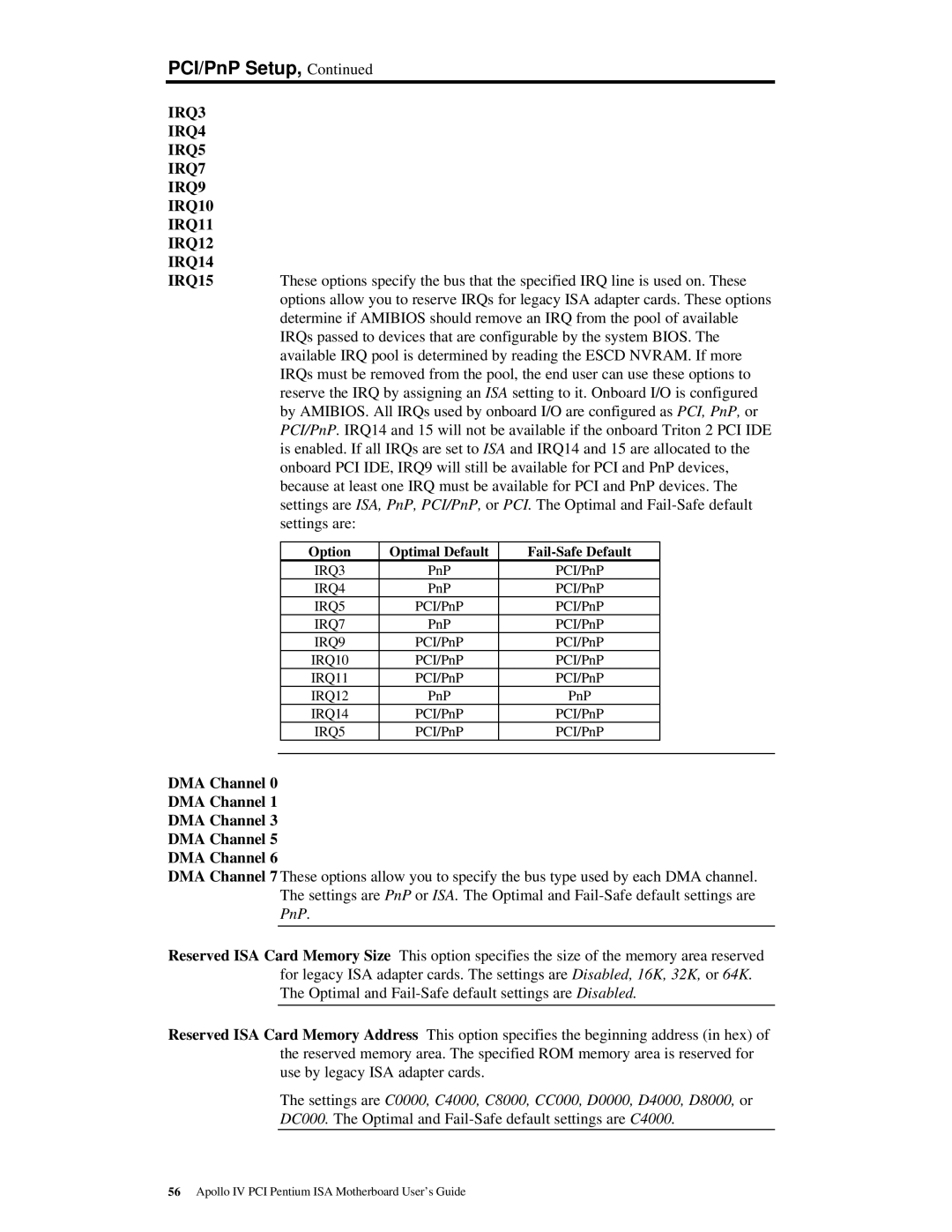
PCI/PnP Setup, Continued
IRQ3
IRQ4
IRQ5
IRQ7
IRQ9
IRQ10
IRQ11
IRQ12
IRQ14
IRQ15
These options specify the bus that the specified IRQ line is used on. These options allow you to reserve IRQs for legacy ISA adapter cards. These options determine if AMIBIOS should remove an IRQ from the pool of available IRQs passed to devices that are configurable by the system BIOS. The available IRQ pool is determined by reading the ESCD NVRAM. If more IRQs must be removed from the pool, the end user can use these options to reserve the IRQ by assigning an ISA setting to it. Onboard I/O is configured by AMIBIOS. All IRQs used by onboard I/O are configured as PCI, PnP, or PCI/PnP. IRQ14 and 15 will not be available if the onboard Triton 2 PCI IDE is enabled. If all IRQs are set to ISA and IRQ14 and 15 are allocated to the onboard PCI IDE, IRQ9 will still be available for PCI and PnP devices, because at least one IRQ must be available for PCI and PnP devices. The settings are ISA, PnP, PCI/PnP, or PCI. The Optimal and
| Option | Optimal Default |
|
|
| IRQ3 | PnP | PCI/PnP |
|
| IRQ4 | PnP | PCI/PnP |
|
| IRQ5 | PCI/PnP | PCI/PnP |
|
| IRQ7 | PnP | PCI/PnP |
|
| IRQ9 | PCI/PnP | PCI/PnP |
|
| IRQ10 | PCI/PnP | PCI/PnP |
|
| IRQ11 | PCI/PnP | PCI/PnP |
|
| IRQ12 | PnP | PnP |
|
| IRQ14 | PCI/PnP | PCI/PnP |
|
| IRQ5 | PCI/PnP | PCI/PnP |
|
|
|
|
|
|
DMA Channel 0
DMA Channel 1
DMA Channel 3
DMA Channel 5
DMA Channel 6
DMA Channel 7 These options allow you to specify the bus type used by each DMA channel. The settings are PnP or ISA. The Optimal and
Reserved ISA Card Memory Size This option specifies the size of the memory area reserved for legacy ISA adapter cards. The settings are Disabled, 16K, 32K, or 64K. The Optimal and
Reserved ISA Card Memory Address This option specifies the beginning address (in hex) of the reserved memory area. The specified ROM memory area is reserved for use by legacy ISA adapter cards.
The settings are C0000, C4000, C8000, CC000, D0000, D4000, D8000, or DC000. The Optimal and
56Apollo IV PCI Pentium ISA Motherboard User’s Guide
